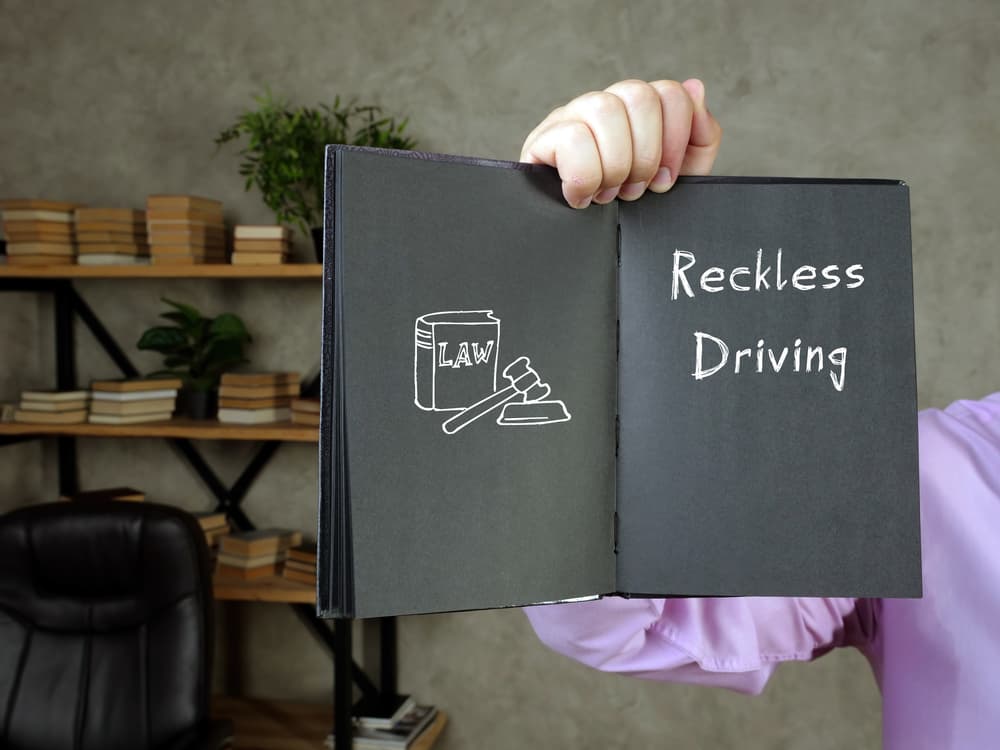When individuals and entities are negligent, serious accidents – including motor vehicle collisions, slip-and-falls, and dog bites – may occur. In addition to suffering physical and mental injuries in these occurrences, accident victims may also experience ongoing pain, suffering, and inconvenience. As part of a personal injury claim or lawsuit, accident victims can recover compensation not only for their medical expenses and lost earnings but also for the pain and suffering they experienced.
A knowledgeable personal injury attorney in your area can quickly evaluate your case circumstances, determine your legal options, and file a timely claim or lawsuit on your behalf. Your lawyer can also introduce the evidence necessary to prove pain and suffering in your case.
Schedule a Free Initial Consultation Today!
Common Occurrences that Can Lead to a Pain and Suffering Claim
Negligence occurs when someone fails to exercise reasonable care, causing harm to others. This type of behavior can lead to various situations where a person may pursue a pain and suffering claim. Such claims are designed to compensate for the emotional distress and general discomfort that an individual experiences due to someone else’s negligence.
- One common occurrence involves car accidents. When drivers do not follow traffic laws or fail to pay attention to the road, serious accidents can happen. Speeding, distracted driving, or running a red light can all lead to collisions. These accidents often result in not just physical injuries but also significant emotional distress. Victims may experience anxiety, depression, or fear while dealing with the aftermath of the crash.
- Another scenario where negligence can lead to pain and suffering claims is in medical settings. If a healthcare provider does not meet the expected standard of care, it can lead to serious consequences. For example, if a doctor misdiagnoses a condition or makes an error during surgery, the patient may suffer prolonged illness or additional complications. The stress and frustration of dealing with medical errors, along with the uncertainty of recovery, can be emotionally taxing.
- Slip and fall accidents also commonly result from others’ negligence. Property owners have a duty to maintain safe conditions. When they fail to fix hazards like wet floors, uneven surfaces, or broken steps, accidents can occur. The victim may experience significant emotional suffering as they cope with injuries, medical treatments, and potential long-term effects of the accident.
Negligent driving, medical malpractice, and unsafe property conditions are just a few examples. Each scenario involves a situation where someone’s lack of care leads to adverse effects on another person’s well-being. The distress from dealing with these situations – including the emotional toll and the inconvenience of having to address problems that others caused – can be grounds for a pain and suffering claim.
Overall, the goal of these claims is to provide compensation for intangible damages that can’t be easily quantified but still significantly affect an injured person’s life.
How Accident-related Injuries Can Lead to Pain and Suffering Claims
Accidents resulting from someone else’s negligence can lead to a variety of physical and mental injuries, many of which may result in pain and suffering claims. These claims seek compensation for both the physical pain and the emotional or psychological harm victims endure due to their injuries.
- Common physical injuries seen in these claims include broken bones, whiplash, and other types of soft tissue injuries. Broken bones can happen in many types of accidents, such as car crashes, falls, or workplace incidents. Depending on the severity, fractures can cause significant pain and require surgery, physical therapy, and long recovery periods. Whiplash, a common neck injury resulting from rear-end car accidents, can lead to chronic pain and mobility issues, sometimes lasting for months or years. Soft tissue injuries, like sprains, strains, and bruises, can also be painful and may limit a person’s ability to perform daily activities.
- Head injuries, including concussions and traumatic brain injuries (TBIs), are also common in accidents. These injuries can result in various long-term effects like memory loss, difficulty concentrating, and chronic headaches. Severe TBIs may lead to permanent disabilities, affecting a person’s ability to work and enjoy life as they once did.
- In addition to physical injuries, many victims suffer mental or emotional harm after an accident. Post-traumatic stress disorder (PTSD) is a common psychological condition that can develop after a serious accident. Individuals with PTSD may experience flashbacks, nightmares, anxiety, and difficulty sleeping. This mental strain can affect their daily lives, relationships, and overall well-being.
- Depression and anxiety are also frequent emotional injuries in these cases. The stress of dealing with the aftermath of an accident – coping with pain, medical bills, or loss of income – can lead to feelings of hopelessness or anxiety about the future. In severe cases, these emotional injuries can require therapy, counseling, or medication to manage.
How to Prove a Pain and Suffering Claim Successfully
Proving a pain and suffering claim can be challenging because it involves showing not just physical injuries but also the emotional and mental toll an accident has taken. However, there are several steps a person can take to build a strong case supported by specific types of evidence that demonstrate the full effect of their injuries.
- First, it’s necessary to establish liability – meaning you need to show that the other party was at fault for the accident. This is done through evidence like police reports, eyewitness testimony, and photos or videos from the accident scene. Once liability is clear, the focus shifts to proving the extent of your pain and suffering.
- Medical records are some of the most important pieces of evidence in a pain and suffering claim. These documents provide a clear picture of the physical injuries you’ve sustained and the treatment you’ve received. Doctor’s notes, hospital bills, X-rays, and prescriptions can help show the seriousness of your condition, which directly ties into the pain you’ve experienced. It’s also helpful to have records of ongoing treatment, such as physical therapy or follow-up visits, which show the long-term nature of your suffering.
- In addition to medical records, personal testimony is powerful evidence in a pain and suffering claim. You can keep a pain journal, documenting how you feel from day to day, both physically and emotionally. This journal should describe your level of pain, difficulties with everyday tasks, and any emotional struggles, such as anxiety or depression, that you experience. The more detailed this journal is, the better it can help illustrate the suffering you’ve endured.
- Testimony from family, friends, and coworkers can also be useful. These individuals can provide insight into how your injuries have affected your ability to live a normal life. They may describe changes in your mood, behavior, or ability to perform routine activities, all of which can strengthen your pain-and-suffering claim.
- Finally, expert testimony from medical professionals, psychologists, or therapists can further support your case by providing professional opinions on the severity of your injuries and their long-term effects.
Recoverable Types of Pain and Suffering Damages in a Personal Injury Case
When you are injured due to someone else’s negligence, you may be entitled to recover compensation for both the physical and emotional harm you’ve experienced. These are referred to as “pain and suffering” damages, and they can play a significant role in a personal injury claim or lawsuit. Pain and suffering damages are intended to compensate you for the non-economic losses you’ve endured beyond just medical bills and lost income.
There are two primary types of pain and suffering damages: physical pain and mental suffering.
- Physical pain damages compensate you for the actual bodily pain resulting from your injuries. This includes the pain you’ve already experienced and the pain you may continue to feel in the future. For example, if you broke a bone in a car accident, you may be compensated for the initial pain of the injury, the discomfort during recovery, and any ongoing pain you may experience, such as chronic pain or limitations on mobility.
- Mental suffering damages cover the emotional and psychological effects of the injury. Accidents can cause significant emotional distress, such as anxiety, depression, fear, or post-traumatic stress disorder (PTSD). Mental suffering may include feelings of helplessness, loss of enjoyment of life, or embarrassment if the injury has caused disfigurement. For instance, someone who is seriously injured may be unable to participate in activities they once loved, leading to a loss of life enjoyment, which can be compensated.
In addition to these primary types, pain and suffering damages can also cover other intangible losses, such as:
- Loss of companionship – If your injuries negatively affect your relationship with a spouse or family members, you may be compensated for the strain on those relationships.
- Loss of consortium – This is a specific type of damage related to how an injury affects a marital relationship, including the loss of intimacy or emotional support.
- Emotional trauma – Severe injuries or traumatic events may leave lasting psychological scars, which can also be part of pain and suffering damages.
Unlike economic damages, like medical bills, pain and suffering damages don’t have a clear dollar amount attached to them. Courts or insurance companies usually calculate these damages based on the severity of the injury, the injury’s long-term effects, and the extent to which the victim’s life has been altered.
How Can a Skilled Personal Injury Lawyer Help with Your Pain and Suffering Claim?
A skilled personal injury attorney can be a valuable asset when pursuing a pain and suffering claim after an accident. These claims can be complicated, as they involve more than just physical injuries. They also account for the overall emotional and mental effects of the accident. A knowledgeable attorney can guide you throughout the process, helping you build a strong case and increasing your chances of receiving fair compensation.
- One of the first things a personal injury lawyer does is investigate the accident circumstances. They will gather evidence to prove that the other party was at fault and that their negligence caused your injuries. This includes collecting police reports, witness statements, photos, and videos from the scene of the occurrence. By establishing clear liability, your attorney lays the foundation for your pain and suffering claim.
- In addition to proving fault, a skilled attorney will demonstrate the full extent of your injuries. This is critical because pain and suffering damages are often subjective, and it can be hard to assign a dollar amount to them. Your attorney will work closely with doctors, medical professionals, and possibly even mental health experts to get a complete picture of your physical and emotional suffering. Medical records, doctor’s notes, and expert testimony can help show how the accident has affected your life, both physically and mentally.
- A personal injury attorney can also navigate negotiations with insurance companies. Insurance adjusters often try to minimize claims, offering lower settlements than you deserve. Your attorney knows the tactics that insurers use and can negotiate on your behalf to ensure you get a fair settlement that covers both your economic losses (like medical bills and lost income) as well as your pain and suffering damages.
- Suppose negotiations don’t result in a fair settlement; a personal injury attorney can take your case to court. They will represent you in front of a judge and jury, presenting evidence and making legal arguments to secure the best possible outcome.
In short, a skilled personal injury attorney not only handles the legal and procedural aspects of your pain and suffering claim but also fights to ensure you receive the compensation you deserve for the physical, emotional, and mental harm resulting from your accident. They can also help you make important decisions throughout your case, maximizing your chances of receiving the full compensation you deserve.
Speak to an Experienced Personal Injury Lawyer about Your Legal Options Right Away
If you or a loved one has experienced pain and suffering due to someone else’s negligence in an accident scenario, it’s important that you retain experienced legal representation as quickly as possible. A knowledgeable personal injury attorney can file a claim or lawsuit on your behalf and aggressively pursue the compensation you deserve for your pain, suffering, and other accident-related losses.







